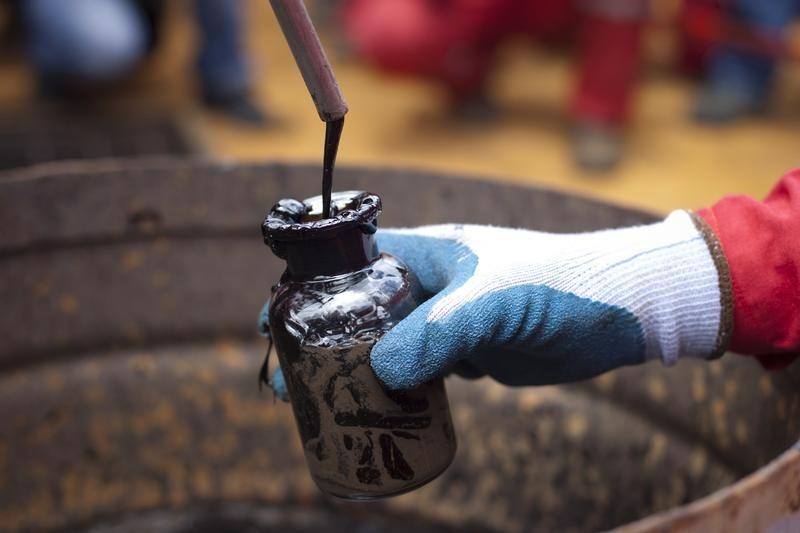By Barani Krishnan
Investing.com -- Oil prices dipped Monday, extending last week’s overall loss, after China reported its first case of the highly-transmissible Omicron subvariant while Federal Reserve officials kept up hawkish rate hike talks ahead of another strong print on inflation expected this week.
London-traded Brent crude was down 12 cents, or 0.1%, to $104.01 a barrel by 1:30 PM ET (17:30 GMT), after last week’s near 4% drop. Brent had slid more than $3 earlier on Monday, posting a session low of $103.71, before short covering pulled the market back.
New York-traded West Texas Intermediate, or WTI, crude was down by 78 cents, or 0.8%, to $104.01 a barrel. The session low for WTI was $100.91. Last week, the U.S. crude dipped 3%.
China’s Shanghai city, which spent months in a tough lockdown earlier this year, has now discovered a Covid case involving the Omicron BA.5.2.1 subvariant, a city official told a media briefing at the weekend. The discovery signals the complications China faces to keep up with new mutations as it pursues its "zero-Covid" policy.
Oil bulls dismissed the China Covid report, with Price Futures Group energy analyst Phil Flynn wryly remarking that “China and Covid always seem to come up when oil prices rise”.
The June print for the US Consumer Price Index, due Wednesday, could show that inflation hasn’t slowed, with economists expecting an annual reading of 8.8% versus 8.6% for May.
Markets are preparing for the odds of the Federal Reserve imposing non-stop rate hikes of 75 basis points this month and the next three if the CPI does not retreat as quickly enough as the central bank expects by the year-end.
“Oil prices are weakening as crude demand outlook is hit by a one-two punch from China’s rising COVID cases and Wall Street jitters that inflation is hitting the US economy much harder than analysts were expecting,” Ed Moya, analyst at online trading platform OANDA, said.
Moya noted that this would be a “massive week” for Wall Street as Fed expectations for the July 27th policy decision will be cemented after the CPI report and signal from banks on whether the US consumer and the economy were weakening faster than most earnings estimates are implying.
As though on cue, the New York Fed said on Monday that more than half of the consumers it surveyed for this month declared that their household financial situation had deteriorated from a year ago and nearly half expect it to worsen in 2023.
“Second quarter corporate profits will struggle given inflation has run much hotter than anyone expected,” said Moya. “Inflation is ‘public enemy number one’ and that will continue to drive fears that the Fed will aggressively tighten policy and send the US economy quickly into a recession. Oil will struggle to hold the $100 level if China’s Covid situation deteriorates much further.”
Rate hikes are anathema to markets. The Fed first resorted to a 75-bps hike in June as it applied its highest rate increase in 28 years to battle inflation expanding at its fastest in 40 years. Then, it appeared to be a “one or two time thing.”
But after the Labor Department’s nonfarm payrolls last week showed U.S. employers added 372,000 jobs in June — some 100,000 more than economists expected — while keeping the jobless rate unchanged at 3.6% for a third straight month, all bets for a Fed softening towards rates evaporated.
Record growth in jobs and wages has been identified as one of the reasons for the runaway inflation as employment security and higher disposable income allowed Americans to pay more for everything.
Now, some economists think the Fed will use the 75-bps cudgel as many times as necessary to get ahead of price pressures. The central bank has four rate revision opportunities between this month and December.
